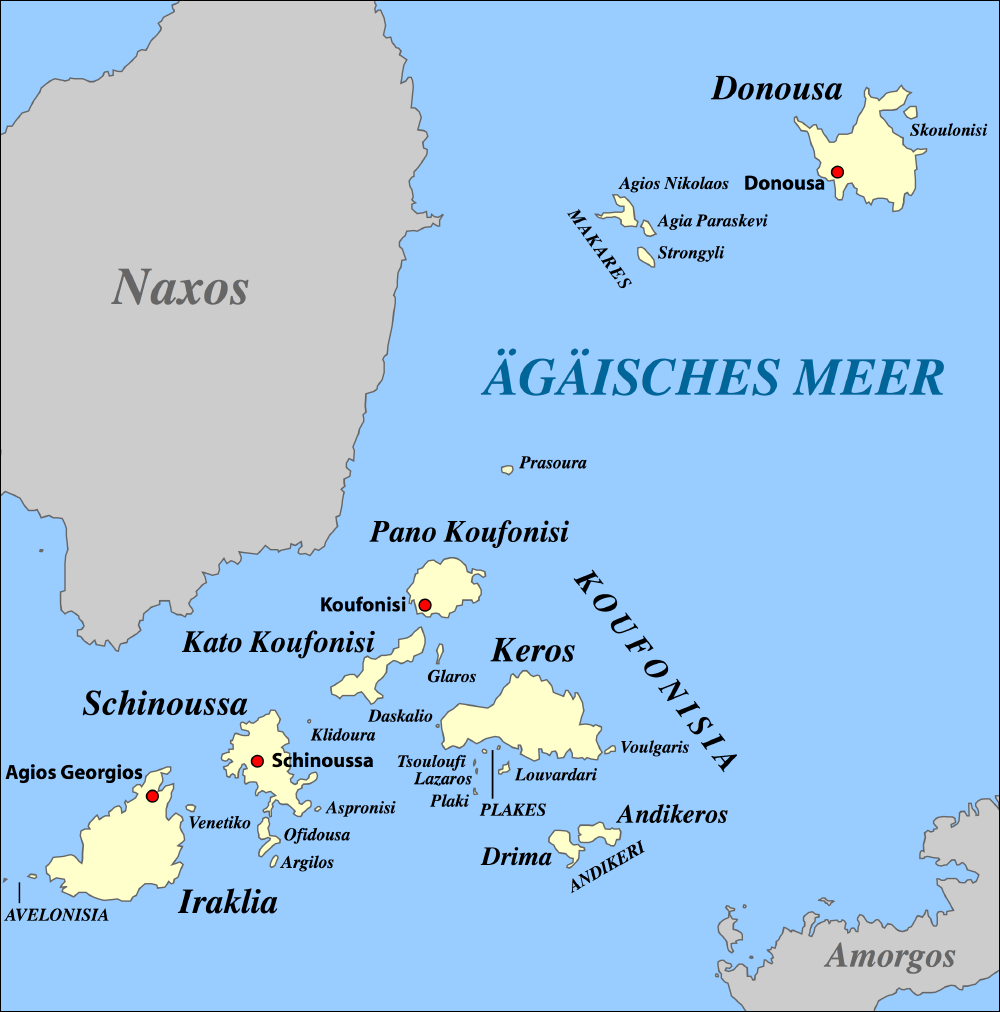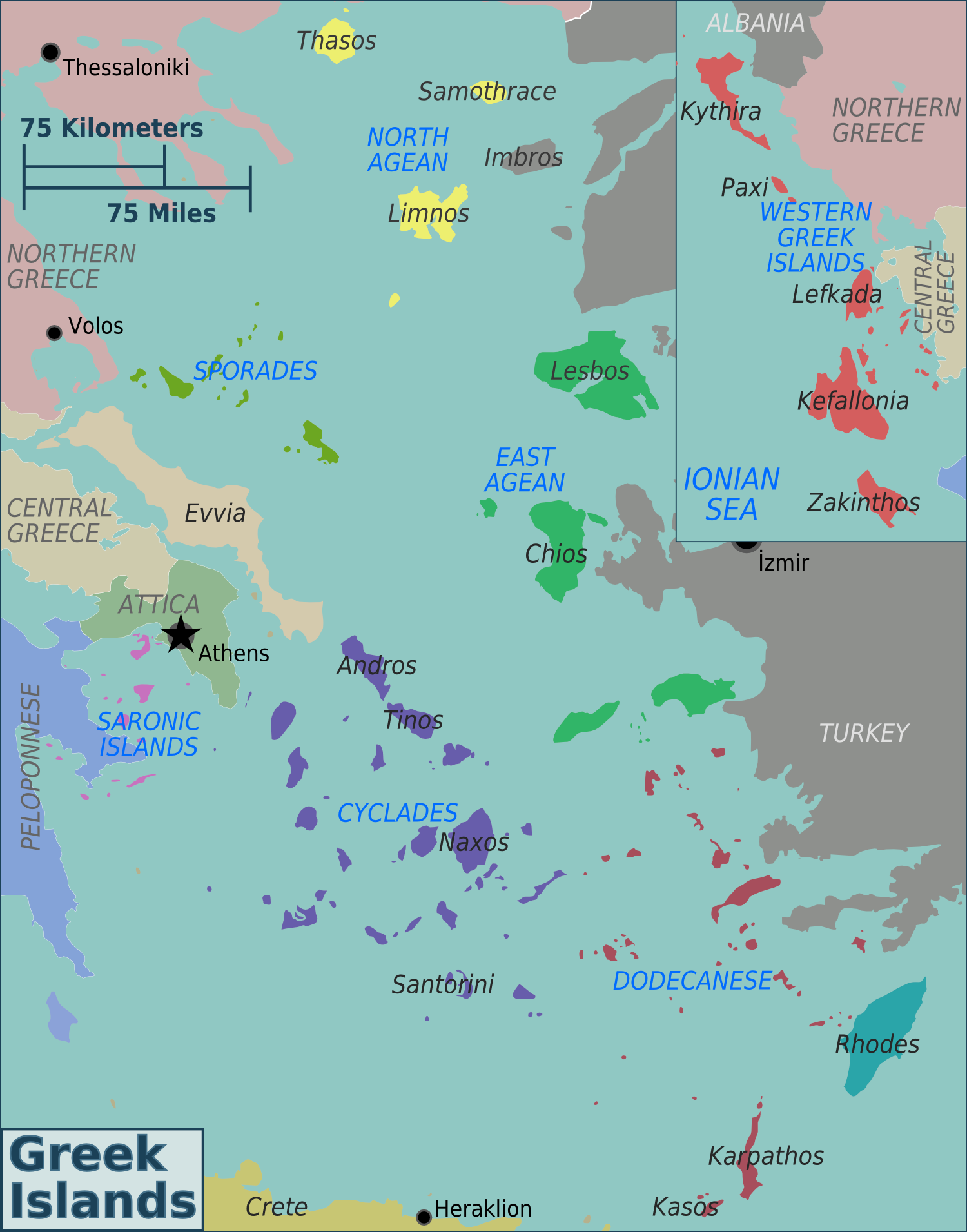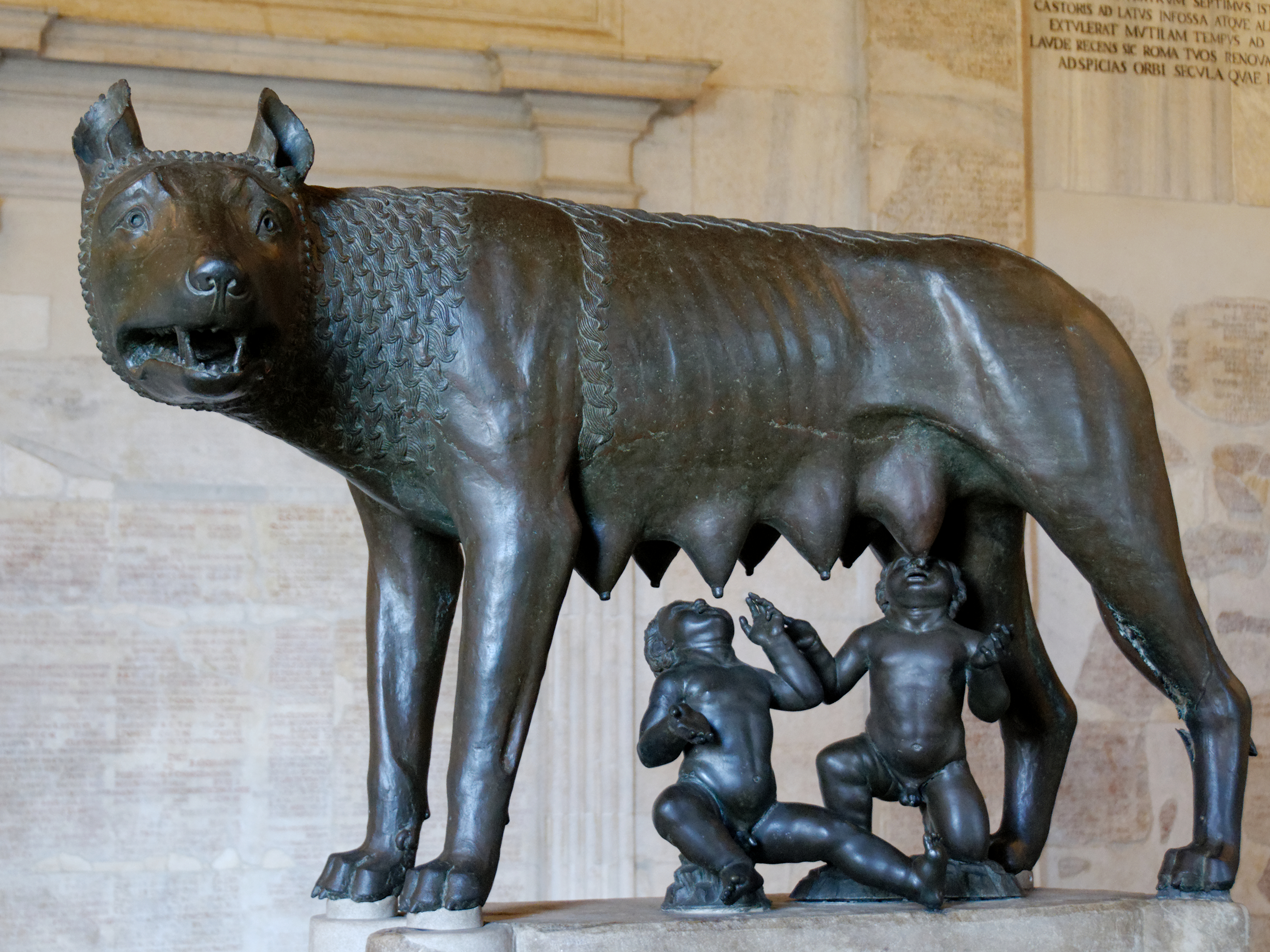|
Schoinoussa
Schoinoussa or Schinoussa ( el, Σχοινούσσα, before 1940: Σχοινούσα, ; anciently, grc, Σχινοῦσσα) is an island and a former community in the Cyclades, Greece. Since the 2011 local government reform it is part of the municipality Naxos and Lesser Cyclades, of which it is a municipal unit. It lies south of the island of Naxos, in the Lesser Cyclades group, between the island communities of Irakleia and Koufonisia. The population was 256 inhabitants at the 2011 census. Its land area is . Description Schoinoussa is located south of Naxos, in the middle about of the Lesser Cyclades island group. It is the fourth largest island of the Lesser Cyclades and the second most populated, after Ano Koufonisi. The island has three settlements, Chora the capital of the island, Mesaria and Mersini which is the port of the island. The derivation of the name Schinoussa is not precisely known. It is believed that the name either derives from the corruption of the ancient ... [...More Info...] [...Related Items...] OR: [Wikipedia] [Google] [Baidu] |
Lesser Cyclades
The Lesser Cyclades or Small Cyclades ( el, Μικρές Κυκλάδες) is an island complex in the Aegean Sea, inside the archipelago of the Cyclades. It is located to the south-east of Naxos and comprises 32 islands and rocks. The main islands are Ano Koufonisi, Kato Koufonisi, Irakleia, Schoinoussa, Donousa and Keros. The largest of them is Irakleia with an area of 18 km2 and the most populated is Ano Koufonisi with a population of 399, according to the 2011 census. Only four of them are inhabited, Ano Koufonisi, Irakleia, Donousa and Schoinoussa. The islet of Kato Antikeri has also two inhabitants. Administratively, the islands belong to the Naxos and Lesser Cyclades municipality apart from the islets of Ano and Kato Antikeri that belong to Amorgos municipality. History During the last ice age most of the islands of the Cyclades were united into a big landmass. After the sea level rose in ca. 9,000 B.C. the Aegean flooded the landmass to form the many small is ... [...More Info...] [...Related Items...] OR: [Wikipedia] [Google] [Baidu] |
Naxos And Lesser Cyclades
Naxos and Lesser Cyclades ( el, Νάξος και Μικρές Κυκλάδες) is a municipality in the Naxos regional unit, South Aegean region, Greece. The seat of the municipality is the town Naxos (city). The municipality consists of the Cycladic island of Naxos and the islands of the Lesser Cyclades: Donousa, Irakleia, Koufonisia, Schoinoussa and several smaller islands. The municipality has an area of 495.867 km2. Municipality The municipality Naxos and Lesser Cyclades was formed at the 2011 local government reform by the merger of the following 6 former municipalities, that became municipal units: * Donousa * Drymalia * Irakleia *Koufonisia Koufonisia ( el, Κουφονήσια) is a former community in the Cyclades, Greece. Since the 2011 local government reform it is part of the municipality Naxos and Lesser Cyclades, of which it is a municipal unit. The municipal unit has an area ... * Naxos (city) * Schoinoussa References Municipalities of the South ... [...More Info...] [...Related Items...] OR: [Wikipedia] [Google] [Baidu] |
Islands Of Greece
Greece has many islands, with estimates ranging from somewhere around 1,200 to 6,000, depending on the minimum size to take into account. The number of inhabited islands is variously cited as between 166 and 227. The largest Greek island by area is Crete, located at the southern edge of the Aegean Sea. The second largest island is Euboea or Evvia, which is separated from the mainland by the 60m-wide Euripus Strait, and is administered as part of the Central Greece region. After the third and fourth largest Greek islands, Lesbos and Rhodes, the rest of the islands are two-thirds of the area of Rhodes, or smaller. The Greek islands are traditionally grouped into the following clusters: the Argo-Saronic Islands in the Saronic Gulf near Athens; the Cyclades, a large but dense collection occupying the central part of the Aegean Sea; the North Aegean islands, a loose grouping off the west coast of Turkey; the Dodecanese, another loose collection in the southeast between Crete ... [...More Info...] [...Related Items...] OR: [Wikipedia] [Google] [Baidu] |
Irakleia, Cyclades
Irakleia or Heraklia ( el, Ηρακλειά; grc, Ἡράκλεια) is an island and a former community in the Cyclades, Greece. Since the 2011 local government reform it is part of the municipality Naxos and Lesser Cyclades, of which it is a municipal unit. Its population was officially 141 inhabitants at the 2011 census, and its land area . It is a small island between the islands of Naxos and Ios. Close to Schoinoussa, Koufonisi, Donoussa, and Keros, together they form the Lesser Cyclades. The port is called Agios Georgios, while the "capital"/chora on the top of the island is called Panagia (Madonna Madonna Louise Ciccone (; ; born August 16, 1958) is an American singer-songwriter and actress. Widely dubbed the " Queen of Pop", Madonna has been noted for her continual reinvention and versatility in music production, songwriting, a ...). The biggest caves in the Cyclades are located on Irakleia. Irakleia can be reached by ferries from Athens, Naxos and Par ... [...More Info...] [...Related Items...] OR: [Wikipedia] [Google] [Baidu] |
Naxos (regional Unit)
Naxos ( el, Περιφερειακή ενότητα Νάξου) is one of the regional units of Greece. It is part of the region of South Aegean. The regional unit covers the islands of Naxos, Amorgos, Donousa, Irakleia, Schoinoussa, the Koufonisia islands and several smaller islands in the Aegean Sea. Administration As a part of the 2011 Kallikratis government reform, the regional unit Naxos was created out of part of the former Cyclades Prefecture. It is subdivided into 2 municipalities. These are (number as in the map in the infobox): *Amorgos (2) * Naxos and Lesser Cyclades (''Naxos & Mikres Kyklades'', 13) Province The province of Naxos ( el, Επαρχία Νάξου) was one of the provinces A province is almost always an administrative division within a country or state. The term derives from the ancient Roman ''provincia'', which was the major territorial and administrative unit of the Roman Empire's territorial possessions outsi ... of the Cyclades Prefecture ... [...More Info...] [...Related Items...] OR: [Wikipedia] [Google] [Baidu] |
South Aegean
The South Aegean ( el, Περιφέρεια Νοτίου Αιγαίου, translit=Periféria Notíou Eyéou, ) is one of the thirteen administrative regions of Greece. It consists of the Cyclades and Dodecanese island groups in the central and southeastern Aegean Sea. Administration The South Aegean region was established in the 1987 administrative reform. With the 2010 Kallikratis plan, its powers and authority were redefined and extended. Along with the North Aegean region, it is supervised by the Decentralized Administration of the Aegean based at Piraeus. The capital of the region is situated in Ermoupoli on the island of Syros. The administrative region includes 50 inhabited islands, including the popular tourism destinations of Mykonos, Santorini and Rhodes. Until the Kallikratis reform, the region consisted of the two prefectures of the Cyclades (capital: Ermoupoli) and the Dodecanese (capital: Rhodes). Since 1 January 2011 it is divided into 13 regional units, f ... [...More Info...] [...Related Items...] OR: [Wikipedia] [Google] [Baidu] |
Ancient Greece
Ancient Greece ( el, Ἑλλάς, Hellás) was a northeastern Mediterranean civilization, existing from the Greek Dark Ages of the 12th–9th centuries BC to the end of classical antiquity ( AD 600), that comprised a loose collection of culturally and linguistically related city-states and other territories. Most of these regions were officially unified only once, for 13 years, under Alexander the Great's empire from 336 to 323 BC (though this excludes a number of Greek city-states free from Alexander's jurisdiction in the western Mediterranean, around the Black Sea, Cyprus, and Cyrenaica). In Western history, the era of classical antiquity was immediately followed by the Early Middle Ages and the Byzantine period. Roughly three centuries after the Late Bronze Age collapse of Mycenaean Greece, Greek urban poleis began to form in the 8th century BC, ushering in the Archaic period and the colonization of the Mediterranean Basin. This was followed by the age of Classica ... [...More Info...] [...Related Items...] OR: [Wikipedia] [Google] [Baidu] |
Landforms Of Naxos (regional Unit)
A landform is a natural or anthropogenic land feature on the solid surface of the Earth or other planetary body. Landforms together make up a given terrain, and their arrangement in the landscape is known as topography. Landforms include hills, mountains, canyons, and valleys, as well as shoreline features such as bays, peninsulas, and seas, including submerged features such as mid-ocean ridges, volcanoes, and the great ocean basins. Physical characteristics Landforms are categorized by characteristic physical attributes such as elevation, slope, orientation, stratification, rock exposure and soil type. Gross physical features or landforms include intuitive elements such as berms, mounds, hills, ridges, cliffs, valleys, rivers, peninsulas, volcanoes, and numerous other structural and size-scaled (e.g. ponds vs. lakes, hills vs. mountains) elements including various kinds of inland and oceanic waterbodies and sub-surface features. Mountains, hills, plateaux, and plains are the f ... [...More Info...] [...Related Items...] OR: [Wikipedia] [Google] [Baidu] |
Amorgos
Amorgos ( el, Αμοργός, ; ) is the easternmost island of the Cyclades island group and the nearest island to the neighboring Dodecanese island group in Greece. Along with 16 neighboring islets, the largest of which (by land area) is Nikouria Island, it comprises the municipality of Amorgos, which has a land area of and a population of 1,973 (2011 census). Geography Due to its position near the ancient Ionian towns, such as Miletus, Halicarnassus and Ephesus, Amorgos became one of the first places from which the Ionians passed through to the Cycladic Islands and onto the Greek mainland. History Throughout history, Amorgos was also known as Yperia, or Platagy, Pagali, Psichia, and Karkisia. Amorgos features many remnants of ancient civilizations. At the time of Archaic Greece, there were three independent city-states there. They are believed to have featured autonomous constitutions but the same currency. Amorgos is distinguished by the size and quality of the wa ... [...More Info...] [...Related Items...] OR: [Wikipedia] [Google] [Baidu] |
Byzantine Empire
The Byzantine Empire, also referred to as the Eastern Roman Empire or Byzantium, was the continuation of the Roman Empire primarily in its eastern provinces during Late Antiquity and the Middle Ages, when its capital city was Constantinople. It survived the fragmentation and fall of the Western Roman Empire in the 5th century AD and continued to exist for an additional thousand years until the fall of Constantinople to the Ottoman Empire in 1453. During most of its existence, the empire remained the most powerful economic, cultural, and military force in Europe. The terms "Byzantine Empire" and "Eastern Roman Empire" were coined after the end of the realm; its citizens continued to refer to their empire as the Roman Empire, and to themselves as Romans—a term which Greeks continued to use for themselves into Ottoman times. Although the Roman state continued and its traditions were maintained, modern historians prefer to differentiate the Byzantine Empire from Ancient ... [...More Info...] [...Related Items...] OR: [Wikipedia] [Google] [Baidu] |
Ancient Rome
In modern historiography, ancient Rome refers to Roman civilisation from the founding of the city of Rome in the 8th century BC to the collapse of the Western Roman Empire in the 5th century AD. It encompasses the Roman Kingdom (753–509 BC), Roman Republic (509–27 BC) and Roman Empire (27 BC–476 AD) until the fall of the western empire. Ancient Rome began as an Italic settlement, traditionally dated to 753 BC, beside the River Tiber in the Italian Peninsula. The settlement grew into the city and polity of Rome, and came to control its neighbours through a combination of treaties and military strength. It eventually dominated the Italian Peninsula, assimilated the Greek culture of southern Italy (Magna Grecia) and the Etruscan culture and acquired an Empire that took in much of Europe and the lands and peoples surrounding the Mediterranean Sea. It was among the largest empires in the ancient world, with an estimated 50 to 90 million inhabitants, roughly ... [...More Info...] [...Related Items...] OR: [Wikipedia] [Google] [Baidu] |


_SouthAegean_(relief-cropped).png)
.jpg)
.jpg)

